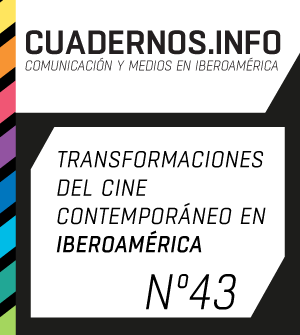Materialidad, formas de vida y animalidad en películas de Ignacio Agüero y José Luis Torres Leiva
DOI:
https://doi.org/10.7764/cdi.43.1463Palabras clave:
cine chileno, materialidad, animales en el cine, cine lento, AntropocenoResumen
Este artículo explora los intercambios entre humanos y no humanos a partir de dos películas chilenas contemporáneas: El otro día (2012), de Ignacio Agüero, y El viento sabe que vuelvo a casa (2016), de José Luis Torres Leiva. Estas películas configuran un ensamblaje en el que se genera una conexión a partir de la figura de Agüero, quien dirige una y protagoniza la otra. Ambos filmes organizan sus narrativas a partir de un dispositivo espacial y topográfico que facilita el contacto entre materialidades humanas y no humanas. Estas películas se construyen a partir del diálogo y de la relación con otros, pero también suponen la mirada atenta del entorno, en el que emergen presencias orgánicas e inorgánicas que afectan el tratamiento de la temporalidad, el montaje y las distinciones genéricas entre documental y ficción.















